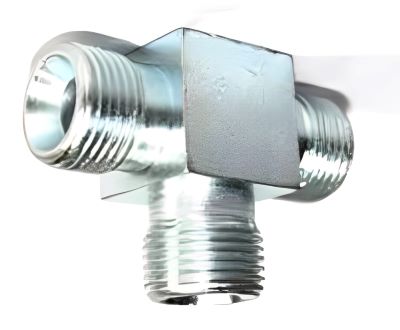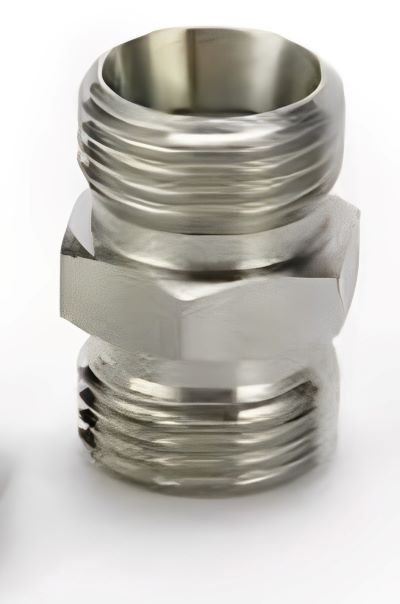The lifeblood of any hydraulic system flows through its connections, and hydraulic threaded connectors play a crucial role in ensuring smooth, reliable operation. Their ease of use, reusability, and wide range of options make them a go-to solution for professionals across various industries.
But with diverse types and critical selection factors, choosing the right connectors can be daunting. This guide delves into the world of hydraulic threaded connectors, empowering you to make informed decisions for your systems.
Types of Hydraulic Threaded Connectors
Let’s explore the main players in the threaded connector game:
➡️ Elbows: Change flow direction at 90 or 45 degrees, ideal for cornering or tight spaces.
➡️ Tees: Create three-way branches for distributing or merging fluid flow.
➡️ Couplings: Connect two pipes with the same thread size for simple, straight connections.
➡️ Adapters: Bridge connections between different thread types or sizes, offering flexibility.
➡️ Plugs: Seal unused ports, preventing leaks and contamination.
➡️ Caps: Protect open ends of lines from dust, moisture, and debris.
Each type comes in various pressure and temperature ratings, typically made from steel, stainless steel, or brass. Steel offers strength and affordability, while stainless steel excels in corrosion resistance, and brass provides good machinability for tight tolerances. Choosing the right material depends on your system’s pressure, temperature, and fluid (e.g., oil, water).
Thread types are another crucial aspect. Common options include NPTF (American National Pipe Thread Fuel), BSPP (British Standard Pipe Parallel), and SAE J1928 (Society of Automotive Engineers). Ensure compatibility between connectors and system components to avoid leaks and potential hazards.
Choosing the Right Hydraulic Threaded Connector
Selecting the ideal connector involves several factors:
➡️ System pressure and temperature: Match the connector’s ratings to your system’s requirements to avoid failure.
➡️ Fluid compatibility: Ensure the connector material is compatible with your fluid to prevent corrosion or degradation.
➡️ Flow requirements and restrictions: Choose connectors that allow sufficient flow without creating pressure drops.
➡️ Connection orientation and space constraints: Select connectors that fit the physical layout and available space.
➡️ Reusability and ease of maintenance: Consider how often you’ll need to disconnect and reconnect, and choose connectors that facilitate easy maintenance.
Thread type and size selection depend on your system specifications. Consult pressure-temperature charts and manufacturer recommendations for specific guidance. Remember, safety first! Always prioritize connectors exceeding your system’s pressure and temperature demands for added reliability and avoiding potential accidents.
Installation and Maintenance Best Practices
For optimum performance and longevity, proper installation and maintenance are essential. Here’s a step-by-step guide:
➡️ Cleanliness is key: Remove dirt, debris, and contaminants from threads and connection surfaces.
➡️ Seal it right: Apply appropriate thread sealants based on your system and connector material.
➡️ Tighten with care: Use the correct torque wrench and follow manufacturer recommendations to avoid overtightening or leaks.
➡️ Regular inspections: Visually inspect connections for leaks, wear, and damage at regular intervals.
➡️ Retightening and replacement: Retighten connections as needed, and promptly replace damaged or worn components.
➡️ Troubleshooting leaks: Identify the source of leaks (loose connections, damaged seals) and address them promptly.
Advanced Considerations and Resources
For demanding environments, specialized connectors exist:
➡️ High-pressure connectors: Withstand exceptional pressure loads for heavy-duty applications.
➡️ High-temperature connectors: Handle extreme temperatures without compromising performance.
➡️ Corrosion-resistant connectors: Ideal for harsh environments with corrosive fluids or exposure.
Understanding torque requirements for different materials and pressure ratings is vital for proper tightening and safety. Additionally, adhering to relevant standards like ISO, SAE, and DIN ensures compatibility and quality.
Conclusion
By understanding the types, selection factors, and best practices, you can harness the power of hydraulic threaded connectors for your systems. Remember, the right choices ensure optimal performance, safety, and peace of mind.
For complex systems or specific applications, consulting qualified professionals is always recommended. So, feel free to ask questions, share your experiences, and explore the exciting world of hydraulic threaded connectors!
Post time: Mar-22-2024





